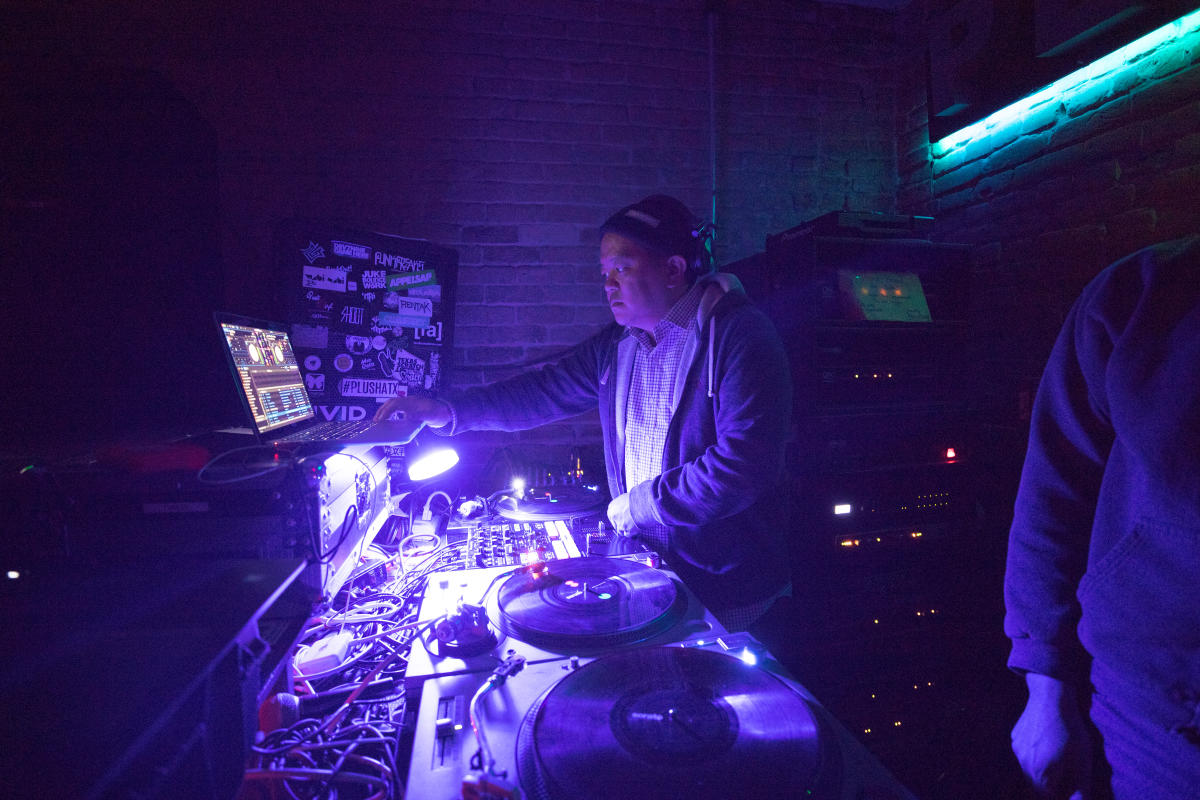
History
In the decadence of the late 1970s through the 80s, Austin had settled comfortably into its current brand of being the Live Music Capital of the World. Beyond Austin’s trademark cosmic cowboy genre, the opposing punk rock and new wave genre began to bubble above the surface as campus mainstay live music venue Raul’s. While the Skunks and the Violators were credited by some as the first two Austin punk bands, it was the headline-sparking arrest of Huns singer Phil Tolstead on stage in September of 1978 that proved to be the inaugural reception of Austin’s punk scene. Later on, Raul’s also saw the inception of local punk legends Big Boys, the Dicks, and the Butthole Surfers.
Out of the punk scene came post-punk genres with electronic elements, beginning an unstoppable era of synth-infused new wave. In the late ‘70s, a gay disco downtown called Rushes saw major success as people from all over the country visited to see the legendary queer black goddess of disco Grace Jones perform, but as the disco scene began to fade, a new club called Club Foot opened in its place and soon became a hotspot for local and touring punk and new wave bands including international treasures such as U2, R.E.M. and the Police.
Kerry Jaggers, local legend and famed club consultant, first DJed Club Foot and went on to establish a number of other venues across the country including Dallas' Starck Club, Houston's Rich's, Austin's Backstreet, and San Francisco's 1015 Folsom. Jaggers is widely credited for bringing the rave scene to Austin in the mid-’80s. To pinpoint the start of the new chapter of electronic dance music in Austin, a dance club called Halls hosted a mobile club-within-a-club called Club Iguana where ecstatic ravers and electronic dance fans alike regularly indulged themselves in the new era of electronic dance music.
Through the decades, other beloved clubs such as Carnaval, Basics, Club 404, Club Kaos, Cave Club, and Cannibal Club all saw the evolutions of several sub-genres of electronic dance music. Whether it was house music, afrobeat, goth, dark wave, industrial, or alternative electronic music, there were many strains of EDM that existed in the ‘80s and ‘90s and live on today.
Curse Mackey, DJ & electronic musician known for his work in industrial supergroup PIGFACE, has been in and out Austin long enough to see the clubs change constantly. However, niche genres like his own maintain strong local followings. Today, he performs worldwide as a solo artist and co-produces electronic/alternative band SINE with local dark wave queen Rona Rougeheart.
Roger Wilson, twice voted in local music polls as Austin’s best club DJ, is also locally renowned for having a huge impact in the development of the electronic music scene in Austin. For over 30 years, Wilson has hosted a still-running weekly ‘80s dance party called Return to Planet 9. Though Austin’s live music landscape has changed through the years, Wilson’s dance parties remain the same. The musical savant has hosted the iconic event at nearly every dance club in Austin since 1989 such as Planetarium, Sanitarium, Acropolis, and Ohms, and now present-day dance clubs such as Drinks Lounge, Elysium, and Cheer Up Charlies.
"Electronic" - Google News
August 18, 2021 at 02:00PM
https://ift.tt/37XfBK8
Venues for Electronic & Dance Music - austintexas.org
"Electronic" - Google News
https://ift.tt/3dmroCo
https://ift.tt/3bbj3jq
No comments:
Post a Comment